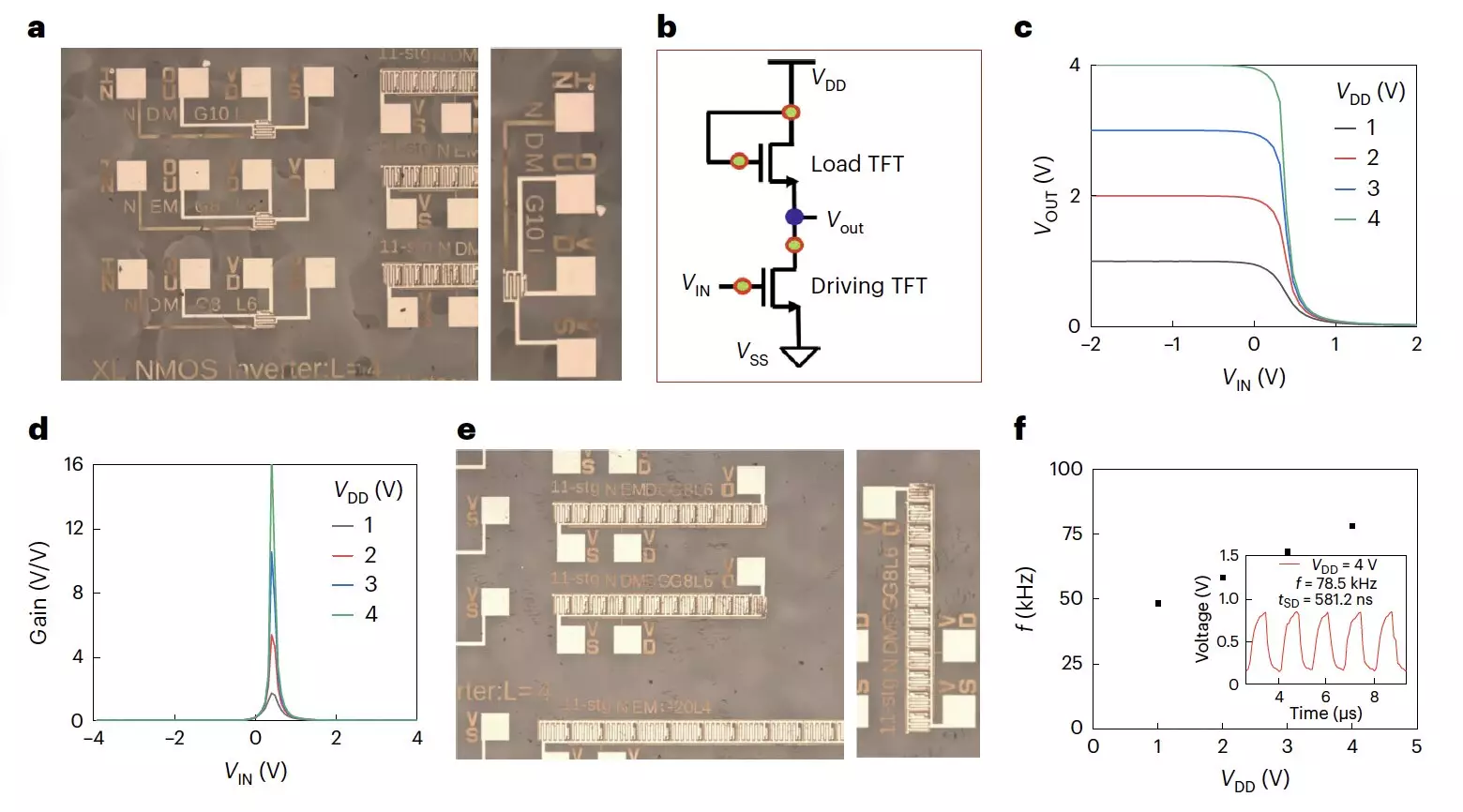Metal halide perovskites have emerged as a promising class of materials with exceptional optoelectronic properties, paving the way for the development of cost-effective thin-film transistors. Recent advancements in this field have primarily focused on utilizing tin (Sn) halide perovskites to create high-performance p-type transistors. However, the challenge lies in achieving similar success with n-type transistors, which are essential for the realization of complementary logic circuits.
While tin halide perovskites have shown impressive field-effect hole mobilities in p-type transistors, they are not suitable for n-type transistors due to inherent limitations. To address this gap, researchers have begun investigating lead halide perovskites, such as formamidinium lead iodide (FAPbI3), for their potential in designing n-type thin-film transistors. Despite their ionic defects, lead halide perovskites offer a new avenue for enhancing electron mobilities and expanding the application scope of perovskite-based transistors.
A recent study published in Nature Electronics introduced a novel strategy for developing high-performance n-type transistors based on metal halide perovskites. Researchers from various institutes worldwide collaborated to fabricate n-type transistors using FAPbI3 perovskite, achieving impressive field-effect mobilities of up to 33 cm2 V−1 s−1. By leveraging a methylammonium chloride (MACI) additive, the team successfully regulated strain in the perovskite lattice, leading to improved properties and enhanced performance.
The n-type transistors developed through this innovative approach exhibited outstanding electron mobilities, minimal hysteresis, and exceptional operational stability under bias stress conditions. Moreover, the researchers were able to utilize these transistors to create all-perovskite unipolar inverters and 11-stage ring oscillators, showcasing the versatility and functionality of metal halide perovskite-based electronic components. Moving forward, the proposed fabrication strategy holds great promise for enabling the creation of highly efficient integrated circuits featuring perovskite transistors.
Looking ahead, the research team aims to further explore the potential applications of their n-type transistors and integrate them into various electronic devices. By optimizing the fabrication process and enhancing the performance of metal halide perovskite-based transistors, they seek to unlock new opportunities for the development of advanced and cost-effective electronics. The continuous innovation in this field could revolutionize the semiconductor industry and drive the next generation of electronic technologies.
The journey towards harnessing the full potential of metal halide perovskites for n-type transistors represents a significant milestone in the realm of semiconductor research. Through interdisciplinary collaboration, inventive strategies, and relentless experimentation, researchers are pushing the boundaries of what is possible with these unique materials. As we stand on the brink of a new era in electronics, the insights gained from these endeavors are poised to shape the future of technology and pave the way for transformative innovations.


Leave a Reply